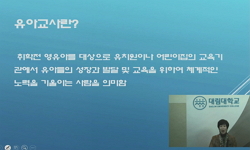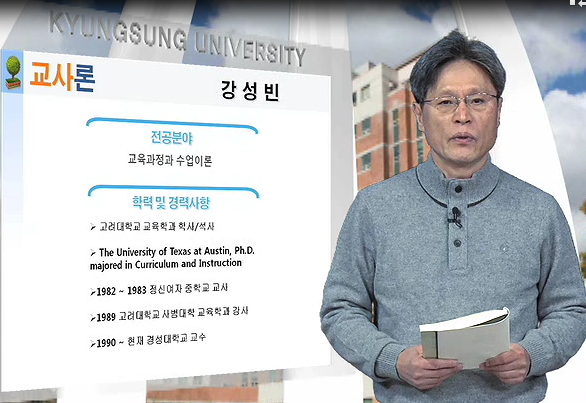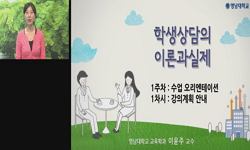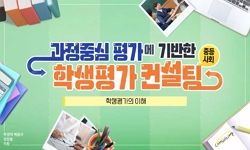본 연구에서는 양성평등 학교문화 현황과 학생과 교사의 양성평등의식 실태를 다루었다. 이를 위해 7차 교육과정 교과서의 성차별적 교육내용, 학교에서의 성차별적 사례, 여교원의 관리직 ...
http://chineseinput.net/에서 pinyin(병음)방식으로 중국어를 변환할 수 있습니다.
변환된 중국어를 복사하여 사용하시면 됩니다.
- 中文 을 입력하시려면 zhongwen을 입력하시고 space를누르시면됩니다.
- 北京 을 입력하시려면 beijing을 입력하시고 space를 누르시면 됩니다.
학생과 교사의 양성평등의식 실태분석 : 부천시 일반계고등학교를 중심으로 = Analysis of the Students and Teachers' Gender Equality Awareness : Focused on High Schools Bucheon Areas
한글로보기https://www.riss.kr/link?id=T9129206
- 저자
-
발행사항
부천 : 가톨릭대학교 교육대학원, 2003
-
학위논문사항
학위논문(석사) -- 가톨릭대학교 교육대학원 , 국어교육전공 , 2003. 8
-
발행연도
2003
-
작성언어
한국어
-
주제어
학생 ; 교사 ; 양성평등의식 ; 부천시 일반계 고등학교
-
KDC
371.1 판사항(4)
-
DDC
379.15 판사항(19)
-
발행국(도시)
경기도
-
형태사항
vii, 99p. : 삽도 ; 26cm
-
일반주기명
참고문헌: p. lxxxiii-lxxxiv
- 소장기관
-
0
상세조회 -
0
다운로드
부가정보
국문 초록 (Abstract)
본 연구에서는 양성평등 학교문화 현황과 학생과 교사의 양성평등의식 실태를 다루었다. 이를 위해 7차 교육과정 교과서의 성차별적 교육내용, 학교에서의 성차별적 사례, 여교원의 관리직 할당제 논의 등과 학생과 교사의 양성평등의식을 비교 분석하였다.
연구의 목적을 달성하기 위하여 설정한 연구 내용은 다음과 같다.
첫째, 7차 교육과정의 교과서에 나타난 성차별적 교육내용에는 어떠한 것들이 있는가?
둘째, 학교에서 학생과 교사가 경험하는 성차별적인 사례에는 어떠한 것들이 있는가?
셋째, 양성평등과 관련되는 교육정책 가운데 여교원의 관리직 할당제에 대한 교원들의 의견은 어떠한가?
넷째, 일반계고등학교 학생들과 교사들의 양성평등의식 실태는 어떠한 차이가 있는가?
이와 같은 연구문제를 해결하기 위하여 먼저 관련된 문헌을 통하여 이론적 근거를 마련하고 부천시 일반계고등학교를 중심으로 설문지를 배부하여 학생용 202부와 교사용 204부를 회수하였다. 본 연구를 위해 수집된 자료는 SPSS(Statistical Package for the Social Science) 프로그램을 이용하여 분석하였다. 분석기법으로는 학생과 교사의 일반적 특성을 파악하기 위해 빈도와 백분율을 산출하였고 학생과 교사의 양성평등의식과 할당제에 대한 인식을 살펴보기 위해 t-test 검증과 One-way ANOVA(일원변량분석)분석 방법을 실시하였다.
위와 같은 과정을 거쳐 밝혀진 본 연구의 주요 결과는 다음과 같다.
첫째, 7차 교육과정의 교과서에 나타난 성차별적 교육내용의 문제점으로는 도덕 교과내용에서는 남성위주의 인물 학습으로 여성인물의 부재가 심각한 문제로 나타났으며, 사회교과에서는 여성을 소비자로 그리고 남성의 대부분은 직업 활동을 하는 생산자, 고위직이나 해외에서 근무하는 사람으로 그리고 있어서 전통적인 성역할 분업의식을 강화시킬 우려가 있는 것으로 나타났다. 실과/기술·가정교과에서는 여성을 여전히 가사노동의 전담자로 그리고 있고, 다양한 가족형태의 출현에 대한 언급이 없거나 아주 피상적이며, 순결교육에 대해서만 다루고 피임교육에 대해서는 취약한 문제점을 갖고 있는 것으로 나타났다.
둘째, 학교에서의 성차별적인 사례에는 여학생에게는 남녀차별 교육행위, 여교사에게는 승진과 성과급제도에서 성차별이 있는 것으로 나타났다.
셋째, 교사들은 여자가 적은 직업에서 할당제 도입에 대해 그다지 찬성하지 않았으며, 여자교사가 남자교사보다 여자가 적은 직업에서 할당제 도입에 대해 찬성하였다. 할당제 정책의 긍정적인 효과로는 교직이 우리 사회의 남녀평등화를 선도하고 있다는 점이라고 인식하는 교사가 많았고, 할당제 정책의 부정적인 효과로는 여성의 우대로 인한 남성에 대한 역차별이라고 인식하는 교사가 대부분을 차지하였다.
넷째, 일반계고등학교 학생들과 교사들의 양성평등의식 실태는 다음과 같다.
① 학생의 양성평등의식은 여학생이 남학생보다 높았으며, 학년이 낮을수록 높은 것으로 나타났다. 학생의 성적에 따라서는 직업생활영역에서 중 수준의 학생이 상, 하 수준의 학생보다 양성평등의식이 높은 것으로 나타났다. 부모의 학력·직업에 따른 양성평등의식에는 차이가 없는 것으로 나타났다.
② 교사의 양성평등의식은 여교사가 남교사보다, 미혼교사가 기혼교사보다, 연령과 교직경력이 적을수록 높은 것으로 나타났다. 윤리와 사회, 가정 담당교사가 그 외 교과 담당교사보다 전반적인 양성평등의식이 높았다. 근무하는 학교형태에 따라서는 여자고등학교 교사가 남녀공학, 남자고등학교 교사보다 높은 것으로 나타났다.
③ 학생과 교사의 양성평등의식의 차이에서는 교사는 학교생활영역에서 학생보다 양성평등의식이 높았으며, 학생은 가정생활, 직업생활, 사회생활영역에서 교사보다 높은 것으로 나타났다.
이상의 결과를 토대로 내린 양성평등교육을 위한 제언은 다음과 같다.
첫째, 교육과정 운영에서의 성균형성 확보를 위하여 교과교육전문가들이 성(gender)문제에 관심을 갖고 양성평등한 교과서의 교육내용과 교육자료의 개발이 필요하며 양성평등을 주된 교육목적으로 하는 여성학(gender studies)교과서를 고등학교 2, 3학년을 대상으로 한 선택교과로 개발·보급하여 직접적으로 양성평등의식을 고양시킬 수 있다.
둘째, 교사들의 전통적인 성역할 고정관념 의식의 전환을 위하여 교원연수를 통한 교원들의 재사회화가 필요하다. 교사들이 참여하는 모든 연수 프로그램에서 양성평등 내용을 각 연수내용에 일정 시간 할당하는 것을 제도화하거나 교육청 주도의 의무연수 방법 등이 마련되어야 한다.
셋째, 교육정책에 성인지적 정책형성기법 도입을 확대하여 교육정책의 성평등성을 제고할 수 있어야 한다. 기획 중인 교육정책이 남녀 학생이나 교사에게 어떻게 다른 영향을 끼칠 것인가를 보다 심도있게 논의하여야 한다. 이와 관련하여 정책담당자의 남녀평등의식이 제고되어야 한다.
넷째, 여교원 관리직 할당제 실시와 양성평등채용목표제에 의한 남교원 30%채용목표 방침은 남녀교사 사이에 상호 역차별 논란과 갈등의 우려가 크다. 그러므로 여교원 관리직 진출 비율을 30%로 개선하여 성균형성을 이루고 남교원채용목표 30%선을 남녀교사들이 서로 수용함으로써 상위 관리직의 성불균형도 해소하고 교직의 여성화도 개선하여 동반자적 교원관계 형성과 양성평등한 학교문화를 이루어야 한다.
다국어 초록 (Multilingual Abstract)
The purpose of this study is to research the current high school culture in gender equality and the actual state of students and teachers' gender equality awareness. For the study, the 7th curriculum textbooks, gender-discriminational cases in schools...
The purpose of this study is to research the current high school culture in gender equality and the actual state of students and teachers' gender equality awareness. For the study, the 7th curriculum textbooks, gender-discriminational cases in schools, the quota system of female supervisors, and the students and teachers' awareness of gender equality were examined. Questionnaire was used for 202 public high school students and 204 teachers in P city, Gyonggi Province. Using SPSS program, the data were analyzed. Frequency and percentage were produced to examine the students and teachers' general characteristics, and T-test and One-way ANOVA were used to investigate the students and teachers' gender-equality awareness.
Results of the data are as follows:
1.7th curriculum textbooks show lack of gender equality conception. Three subjects of ethics, social studies, and technics/home economics proved to include gender-discriminational contents. In Ethics most of the characters are male and females are only few. In Social Studies female characters are described as consumers rather than producers, high-ranking officials, or overseas workers. In Technics/Home Economics females are shown as complete charger of household affairs. The appearance of various types of families is not mentioned, or if any, superficially mentioned. Education in sexual morality is included, but education in contraception is very weak.
2. Gender discrimination cases in schools are found in differences of educational contents for female students, and in promotion and incentive system for female teachers.
3. Teachers are not in favor of introducing the quota system in occupations where there are less females, while female teachers approve it more. Many teachers think that the positive effect of quota system is teaching profession is leading the way to gender equality, but the negative effect is reverse discrimination against male teachers due to preferential treatment of female teachers.
4. In students' awareness in gender equality, female students were more keen than male ones, and the lower graders, the more keen. Students of middle-level academic achievements were more keenly aware of gender equality than low and high level students regardless of their parents' education and occupations.
In teachers' awareness in gender equality, female, single, and less experienced teachers were more keen than male, married, and more experienced teachers respectively. Awareness was highly observed in Ethics, Social Studies, and Home Economics teachers than other subject teachers, and in girls' school teachers than co-educational and boys' school teachers.
As a whole, teachers were more aware of gender equality than students in school life domain, but students domestic, professional, and social domains. The following is the solutions to solve the problems mentioned above:
First, gender impartiality should be secured in administrating 7th curriculum. Curriculum specialists should have interest in gender problems and develop educational contents and materials of gender equality. Adoption of 'Gender studies' as an optional course to second and third year high school students will be an effective way to enhance the conception.
Secondly, teachers should be trained through workshops so that their stereotyped idea of gender roles can be changed. We should make it a rule that each workshop assigns certain amount of time for gender equality education or every local education board runs obligatory training programs.
Thirdly, gender equality in educational policies should be improved by increasing gender-perspective policy decisions. An educational policy in the planning stage should be explored in depth with reference to its influences to both male and female students and teachers. Accordingly a person in charge of a policy should enhance his awareness of gender equality.
Lastly, the quota system of female supervisors and employment of 30% male teachers according to gender-equal employment policy are likely to bring arguments over reverse discrimination and conflicts between both gender teachers. Therefore, both gender teachers should agree to limiting the percentage of female supervisors to 30% and employing 30% of male newcomers, solving the problems of inequality in high rank officials and feminization of teaching profession. As a result, both gender teachers will go into partnership and form gender-equal school culture.
목차 (Table of Contents)
- 목차 = ⅳ
- Ⅰ. 서론 = 1
- 1. 연구의 필요성 및 = 1
- 2. 연구 문제 = 4
- 3. 연구 방법 = 4
- 목차 = ⅳ
- Ⅰ. 서론 = 1
- 1. 연구의 필요성 및 = 1
- 2. 연구 문제 = 4
- 3. 연구 방법 = 4
- 4. 용어의 정의 = 5
- 5. 연구의 제한점 = 6
- Ⅱ. 양성평등교육에 관한 이론적 배경 = 7
- 1. 성차별적 교육과 양성평등교육의 개념 = 7
- 2. 양성평등교육의 목적 = 13
- 3. 선행연구 고찰 = 16
- 4. 양성평등 학교문화 현황 = 19
- 1) 제7차 교육과정 교과서 내용 = 19
- (1) 도덕과의 양성평등교육 내용과 문제점 = 19
- (2) 사회과의 양성평등교육 내용과 문제점 = 20
- (3) 실과/기술?가정교과의 양성평등교육 내용과 문제점 = 21
- 2) 학교에서의 성차별 사례 = 26
- (1) 학교에서의 대표적인 남녀차별행위의 유형 = 26
- (2) 여학생들의 글을 통한 남녀차별 경험 = 27
- (3) 교사들의 글을 통한 성불평등 문화 = 31
- 3) 양성평등 교육정책 : 여교원 관리직 할당제 = 35
- (1) 여성교원 관리직 진출현황 = 35
- (2) 여교원 관리직 할당제 적용의 필요성 = 39
- (3) 할당제 적용의 법적 근거 = 42
- (4) 외국의 할당제 적용 사례 = 45
- (5) 교사들의 여교원 관리직 할당제에 대한 찬반 논의 = 49
- Ⅲ. 학생과 교사의 양성평등의식 실태 = 53
- 1. 조사대상 = 53
- 2. 측정도구의 신뢰도 = 56
- 3. 자료분석 = 57
- 4. 양성평등의식 조사결과 및 분석 = 57
- 1) 양성평등에 대한 학생의 의식 = 57
- 2) 양성평등에 대한 교사의 의식 = 64
- 3) 양성평등에 대한 학생과 교사의 의식의 차이 = 77
- Ⅳ. 요약 및 제언 = 78
- 1. 요약 = 78
- 1) 양성평등에 대한 학생의 의식 = 78
- 2) 양성평등에 대한 교사의 의식 = 79
- 3) 양성평등에 대한 학생과 교사의 의식 = 80
- 2. 양성평등 교육을 위한 제언 = 81
- 참고문헌 = 83
- 부록 = 85
- 영문인준서 = 94
- Abstract = 95












